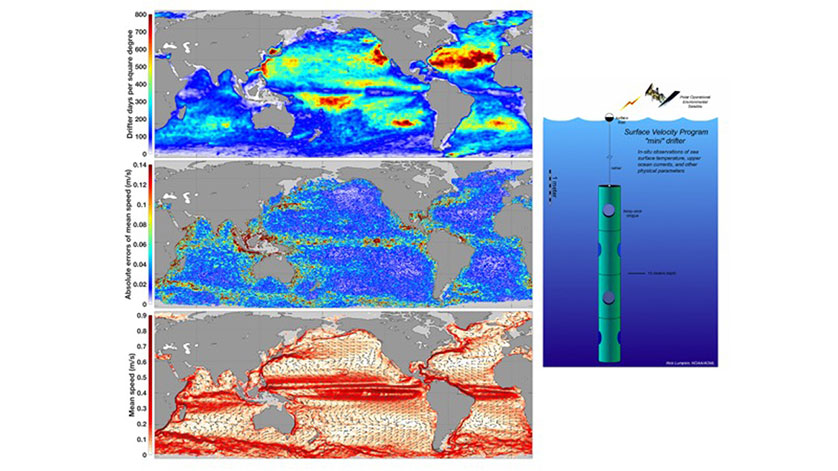New Global Ocean Circulation Climatology Released

Scientists from the University of Miami’s (UM) Rosenstiel School of Marine and Atmospheric Science and the National Oceanic & Atmospheric Administration Atlantic Oceanographic and Meteorological Laboratory (NOAA/AOML) have released an updated data set describing the statistical properties of the global near-surface ocean circulation.
In addition to helping improve scientific understanding of intense boundary currents such as the Gulf Stream, the enhanced data set can help better predict the transport of fish larvae and pollutants such as oil, plastic, and marine debris.
In the study, the researchers analyzed 40 years of data from NOAA’s Global Drifter Program (GDP), a collection of buoys designed to move with ocean currents. Expanding on previous studies, the present analysis also incorporated observations from unanchored drifters, or undrogued, to correct current data estimates. Undrogued drifters are much more sensitive to wind and wave action.
To account for the wind and wave impacts on undrogued drifters, they modified a formulation proposed in an earlier study, finding patterns that could improve understanding of how wind and waves carry particles at the ocean surface. By making the undrogued drifter data usable, they were able to nearly double the amount of available GDP data.
The study also improved drifter-based estimates of the ocean circulation by introducing a new estimation method for averaging drifter observations. The study divided the ocean in small areas, referred to as bins, to obtain further accurate assessments.
“We averaged the drifter observations area by area to estimate the circulation. However, to obtain enough data so we can trust our estimates, these areas tend to be too large,” said Lucas Laurindo, a UM Rosenstiel School graduate student and lead author of the study. “We can think of the bins as pixels in a picture: the larger the pixels, the less details we will be able to resolve. We developed a method that reduces this effect, and allows us to resolve finer details of the ocean circulation.”
The new map could also help determine the most fuel-efficient ship routes and be used as a support tool for search and rescue operations at sea, says the researchers. The findings also shed light on recirculation cells associated with these major currents.
With the availability of more accurate ocean circulation information based on direct observations from drifters, indirect estimates obtained from satellite observations and computer simulations can be validated, and statistical models of floating material in the ocean can be improved, leading to more accurate predictions of the path of pollutants or larvae or other items in the sea, and to more efficient search-and-rescue efforts.
The study, titled “An improved near-surface velocity climatology for the global ocean from drifter observations,” by Lucas Laurindo and Arthur Mariano of UM, and Rick Lumpkin of NOAA/AOML, was published April 13 in the journal Deep-Sea Research Part I.
The research was funded by a Gulf of Mexico Research Initiative grant to the UM- Rosenstiel School-based Consortium for Advanced Research on Transport of Hydrocarbon in the Environment (CARTHE), National Science Foundation (OCE Grant 1434198), NOAA/AOML, and by NOAA’s Ocean Observing and Monitoring Division. The new surface-current product can be found here.

